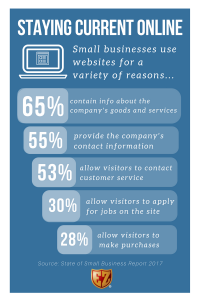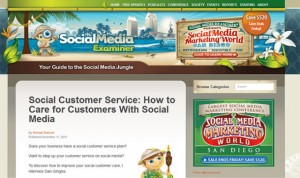How can marketing better align with sales? Contributor Sweta Patel walks you through the ins and outs of building a lead-scoring plan and the metrics for tracking lead-scoring success.

These days, customer journeys look less like a yellow brick road and more like an endless maze with numerous possibilities. Different channels, multiple devices and a slew of sources can create countless non-linear paths. As B2B marketers, our great task is to leverage and measure these journeys to maximize sales opportunities.
Therefore, marketers must be vigilant about lead scoring and which leads they are sending off to sales.
In most cases, we see that many of the leads forwarded to sales are bypassed or completely ignored. Why? Salespeople feel that the leads are not qualified, and they can’t afford to waste their time focusing on “marketing” leads when they can find hot leads elsewhere. So, what can marketing do to create a more effective alignment with sales?
One possible answer is lead scoring.
Lead scoring is used to rank prospects against a scale that represents the perceived value of each lead. The resulting score is then used to determine which leads the sales team will engage, in order of priority.
Lead scoring is about qualifying prospects so that salespeople can do their job more efficiently. It also aids in ensuring that marketing will focus their effort toward generating the right leads.
As a result, sales should be able to turn their attention to higher-quality leads and reduce the lead response time. Simultaneously, this will increase the lead-to-opportunity conversion rate. This is the true measurement of success when it comes to building lead scoring models.
Current marketing and sales challenges
While many claim to recognize the importance of sales and marketing alignment, most companies still struggle with it.
You’ve heard it before. The sales team complains that marketing is just spending money and working on campaigns that don’t scale. Marketing claims they’re generating the right type of leads because the score says so and they’re taking every lead through the nurture process. When this type of disconnect arises, it’s time for marketing to understand the sales perspective and build a methodology that works collaboratively.
Other times, the sales team feels they need more leads, and marketing may think the leads they’re delivering aren’t being followed up. Marketing believes they’re delivering the highest-quality leads.
Then again, it isn’t like all the value can be found through a single channel. It’s about testing every channel through the ROI path. In the end, all the channels work together to deliver success.
For example, think of a green energy company focused on Google AdWords, Facebook advertising, Twitter advertising and guest blogging. If all four channels collectively bring value, it would be tough to omit one and narrow the focus to a single channel.
That type of scenario deals with budgets and leads for the sales development reps (SDRs). As budgets increase, the quality of leads that come in through the pipeline will diminish. As the lead quality diminishes, the SDRs become less driven to call the leads. Hot leads become cold leads, and a vicious cycle begins. Then the conversion rate plummets, and we’re back to square one again. So what’s the solution?
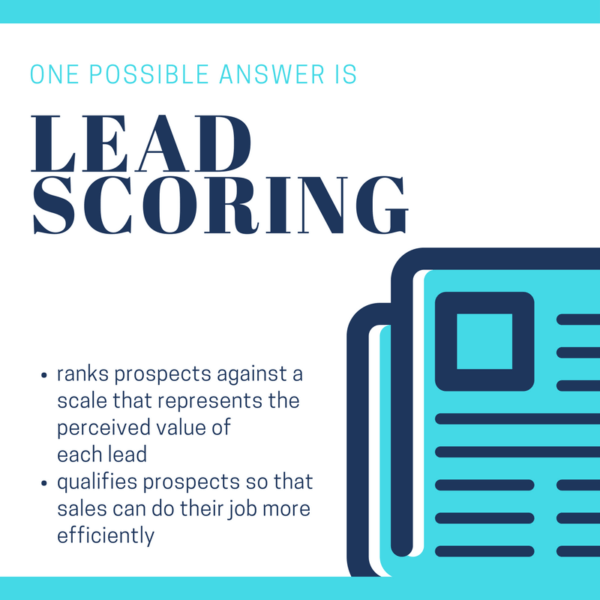
Service-level agreements that actually scale
The ultimate “win-win” happens when sales and marketing work together to build a cohesive experience that will in turn generate more sales. Marketing and sales can be powerful when they focus on the three basic processes:
- Define the leads.
- Establish the handoff process.
- Set goals.
Define the leads
The term “lead” is one of the most generic of all terms, and it’s all too often used rather loosely.
Some companies go out and purchase lists of people based on certain criteria like job titles, industries or interests in certain subjects or technologies. They import them into their CRM (customer relationship management) tool and call them leads.
This is not the definition of a lead. It’s far from the yellow brick road or even a well-designed maze — it’s more like a carpool lane in which you and a bunch of other suckers are together in a van, beelining towards ice-cold leads that are likely still annoyed by the last set of marketers that bombarded them. This is epic demand generation failure waiting to happen.
Names and emails that have simply been purchased or rented from a list broker — no matter how well they match specific criteria — are not leads (even if that’s what the list brokers call them).
What are they? These records don’t even have an official term in marketing parlance. Some people refer to the records in these lists generically as “contacts,” but since the term “contact” has a very specific meaning within CRMs (people who are associated with existing accounts), using this term to refer to these non-leads can cause confusion. Instead, we’ll just refer to them as “records.”
Rather than records, you want to find MQLs. What’s an MQL (Marketing Qualified Lead)? The answer depends on your specific criteria. How can you separate out leads and contact the highest-quality ones first? By setting some criteria that make sense for your particular business.
For example, some typical criteria that can factor into qualifying a lead as an MQL include:
- requesting a demonstration.
- requesting a free trial.
- requesting certain types of content.
- viewing certain web pages.
- opening on or clicking emails.
- following or engaging on social media.
- having specific job titles.
- working for specific types of company.
- sustained interest in the company or products.
You will want to define your SALs (sales accepted leads) and SQLs (sales qualified leads) as well.
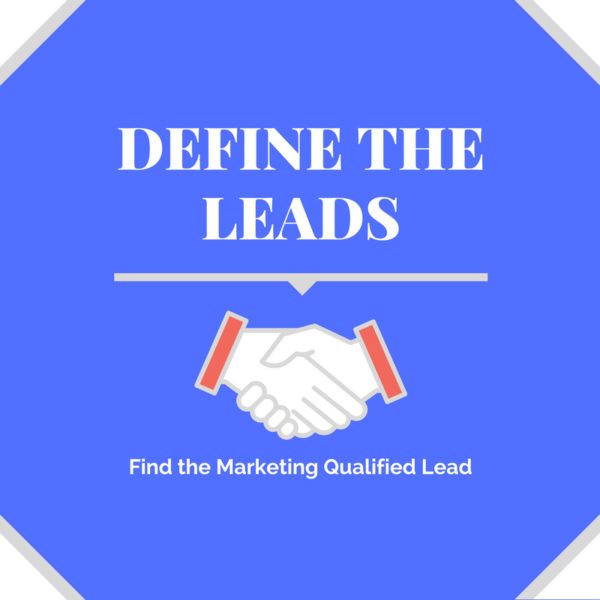
Establish the handoff process
The service-level agreement also involves each team making commitments about how they handle the leads as the status changes to ensure that no leads slip through the cracks. These agreements define both the actions that will be taken at specific stages as well as time frames within which the actions should be taken.
For example, let’s say that an MGL (Marketing Generated Lead) qualifies as an MQL because they request a free trial of a web service. That request for a free trial should trigger a workflow within the marketing automation tool that will execute the following steps:
- Ownership of the lead is assigned to the appropriate SDR.
- A notification email is sent to the SDR.
- A timestamp is set noting the time the lead became an MQL.
The marketing team has now fulfilled its obligation under the SLA for the handoff of MQLs, and the clock is started for the SDR to fulfill their role.
Here is an example we used for our company:
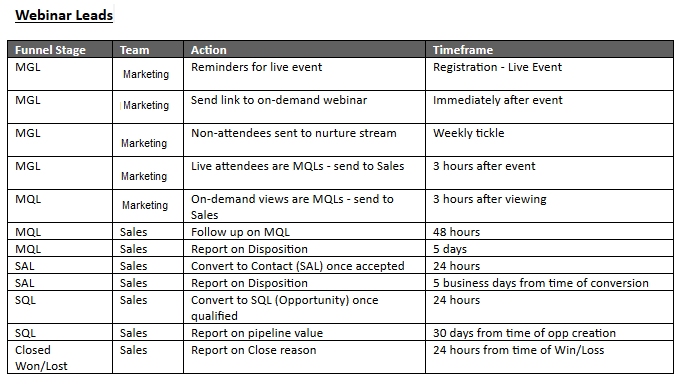
Setting goals
The other key purpose of the service-level agreement is to establish reasonable goals for lead generation. Setting these goals serves three very important purposes:
- They provide both sales and marketing executives data on which to base their strategic planning.
- They reduce conflicts that could arise from confusion around unmet expectations.
- They improve morale by giving both teams clear, achievable objectives that they can celebrate accomplishing every month.
The goal-setting process flows from the top down to determine the number of MGLs the marketing team is ultimately responsible for. That is, it starts with the revenue goals established by company executives and works backward from there.
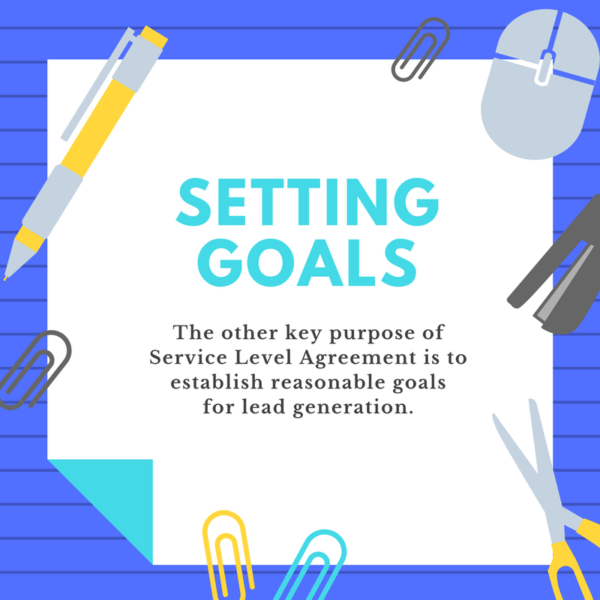
Strategies for lead-scoring success and metrics
The scoring process can be tedious but at the same time valuable. Here are some strategies for scoring your leads. This will enable you to make the decision-making process easier and focus on the core of your marketing performance goals.
Let’s start with the URL structure and applying attribution throughout the customer journey. You can easily use the Google URL builder tool to set up the parameters for the unique URL. Set points for every channel and determine how you will score the touches.
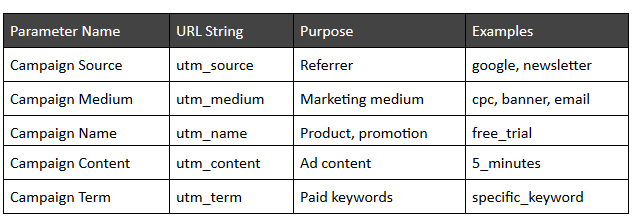
Thus, a URL with complete tracking parameters will look something like:
http://www.yoursite.com/?utm_source=google&utm_medium=cpc&utm_name=free_trial&utm_content=5_minutes&utm_term=specific_keyword
Then let’s dive into form questions. The key here is to make sure every question is well-thought-out and you’re able to easily analyze the data you attain from the forms. We don’t want to ask questions that don’t help us convert leads into sales. I always like to add the persona question: “How do you best describe yourself?”
Once they pick a vocation, then I add them to a nurture flow that pertains to them. They will receive an email sequence which eventually leads them to purchase the product/service.
Quick bonus: Include pre-filled forms for higher conversion rates. The dread of filling out a form may be inhibiting your target audience from reaching their goals.
Metrics for tracking lead-scoring success
Decisions you make as a marketer should be informed by some basic information about your product or service. Sales teams will only be happy if they can meet revenue goals. You can’t very well support those goals unless you have some background information on ROI and sales conversion rates for leads of different types.
With this, you can determine how many and what types of MGLs (Marketing Generated Leads) to focus on.
There are five key metrics required to do the calculations to determine MGL targets:
- Company revenue goals
- Percent of revenue that derives from MGLs (as opposed to sales-generated leads)
- Average revenue per deal
- Average percentage of MQLs that convert to closed sales
- Average percentage of MGLs that convert to MQLs
Here’s an example lead score model that you can use for your B2B organization:
Qualifications include:
Overt qualification (established by lead responses on form field)
- Uses ABS and UXY software.
- Has trouble solving XYZ.
- Doesn’t have any insights on XYZ.
Implicit qualification (established through behavioral and demographic scoring)
- Behavioral scoring
- Forms complete (+10)
- Pages viewed on website (+1/page)
- Targeted page view on website (+3/page)
- Opened emails (+3)
- Click in an email (+5)
- Demographic scoring
- Job title matches one of targeted listed above (+10)
- Seniority level (executives +5)
- Targeted industry (+5)
- Company size (TBD)
- Total score of 50 qualifies as an MQL
Once a lead graduates from MGL to MQL status, it’s pushed to the CRM (e.g., Salesforce), where it is evaluated by the sales team.
It’s time to stop using guesswork when it comes to seeking out quality or qualified leads. A lead scoring plan will do just that, and you will find that the mutual frustration between marketing and sales teams will begin to dissipate. In its place, you’ll find the relief of a working partnership and the joy of seeing the fruits of your labor as the system starts actually working as it should.
Some opinions expressed in this article may be those of a guest author and not necessarily Marketing Land. Staff authors are listed here.
Marketing Land – Internet Marketing News, Strategies & Tips
(93)


